
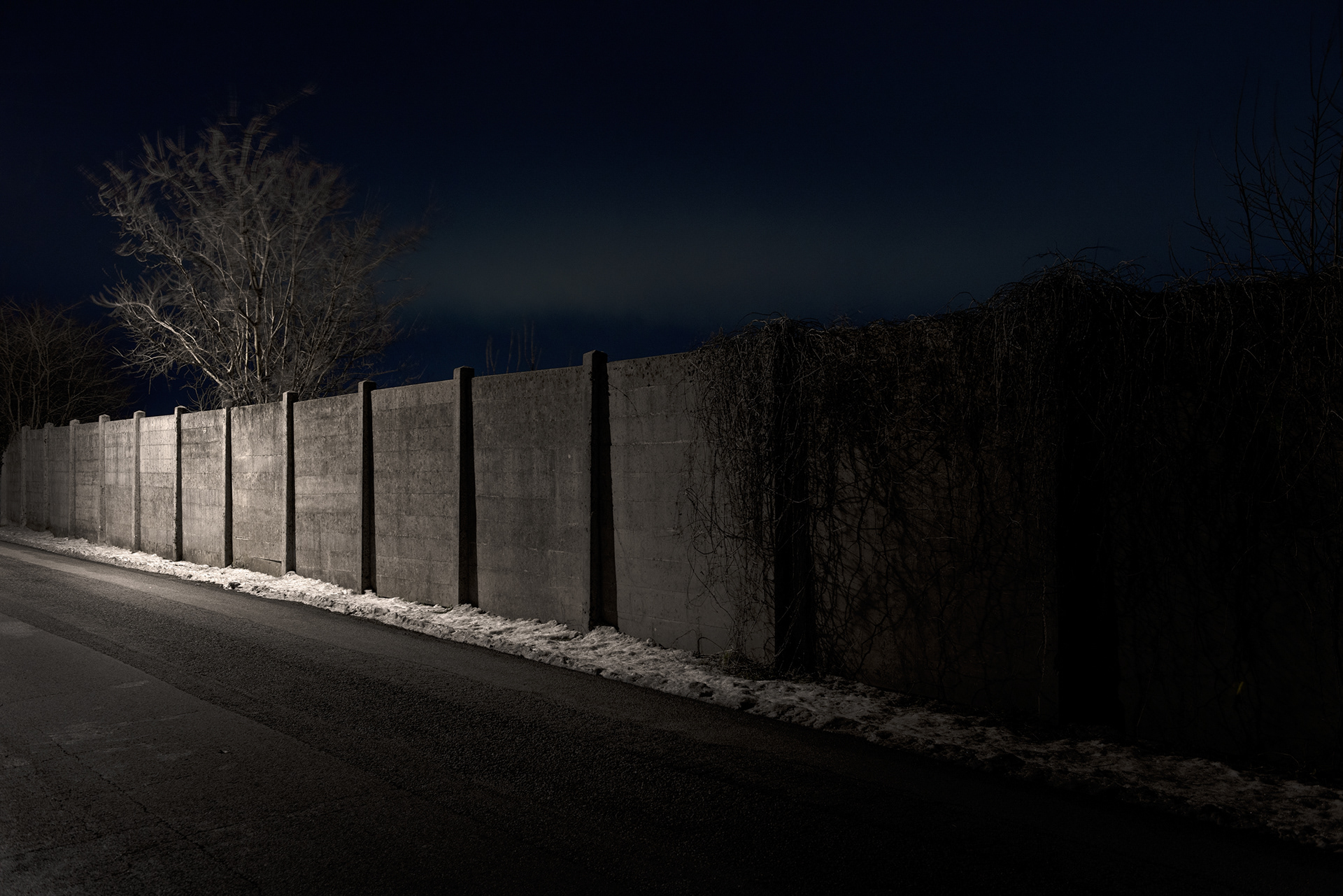
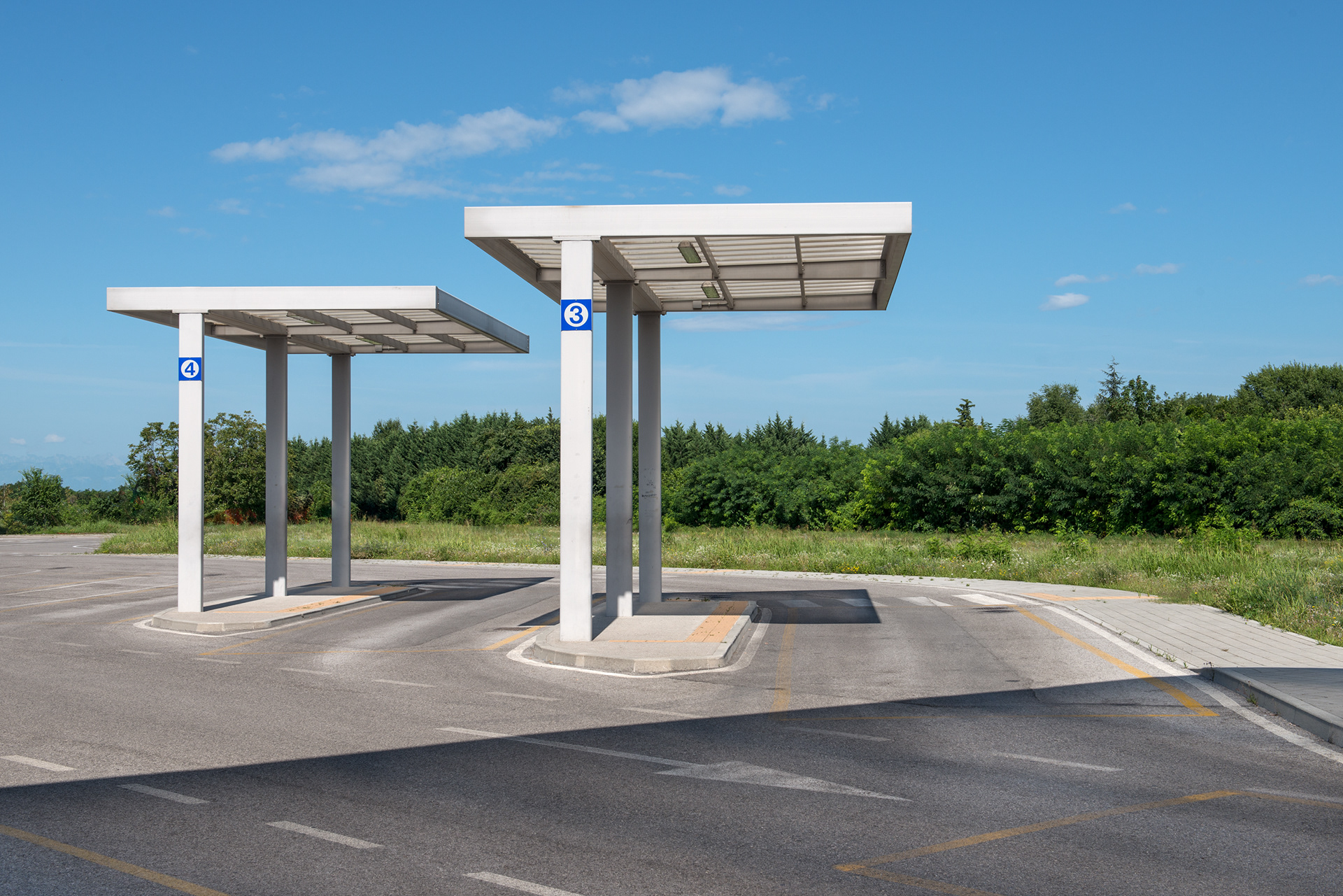

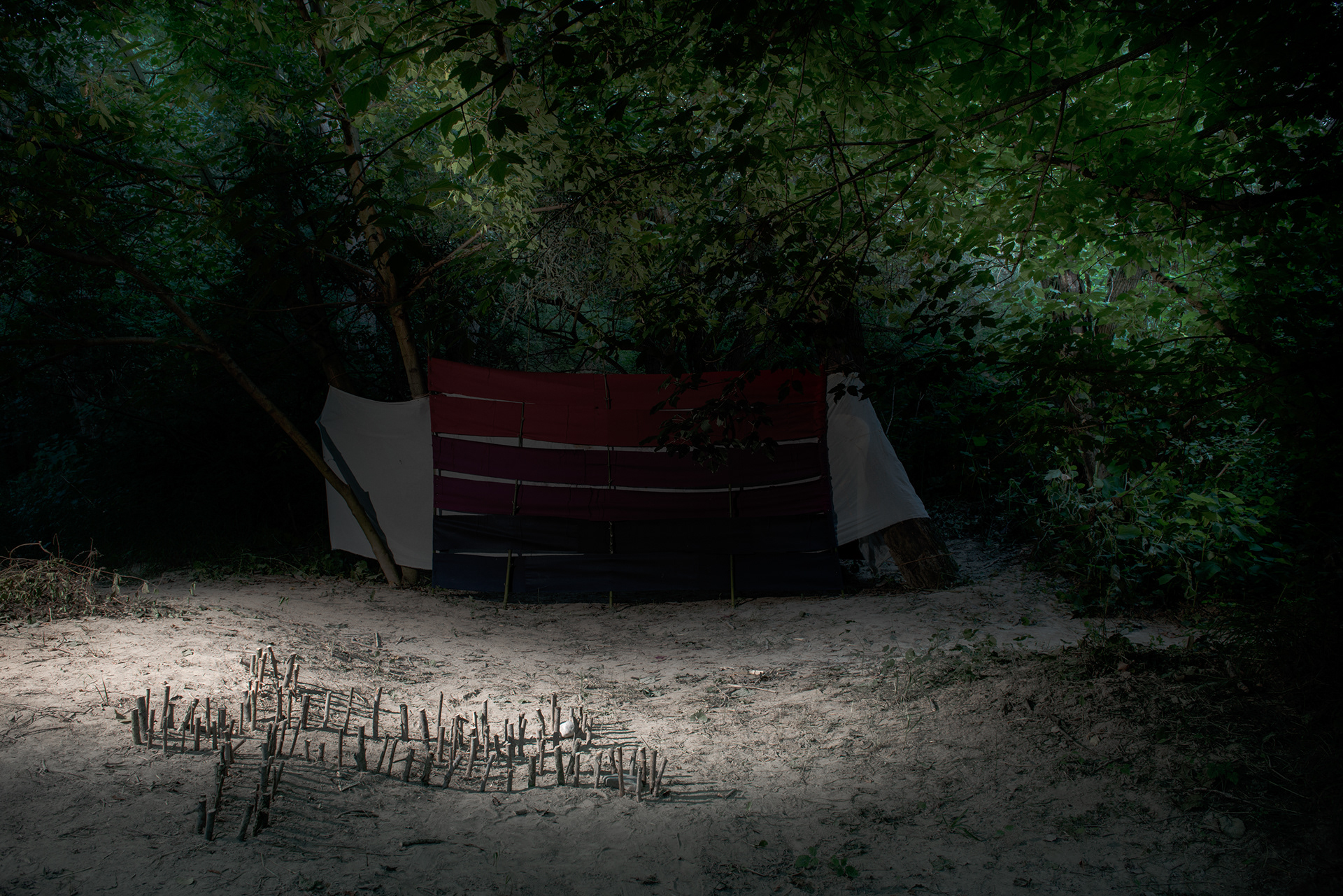
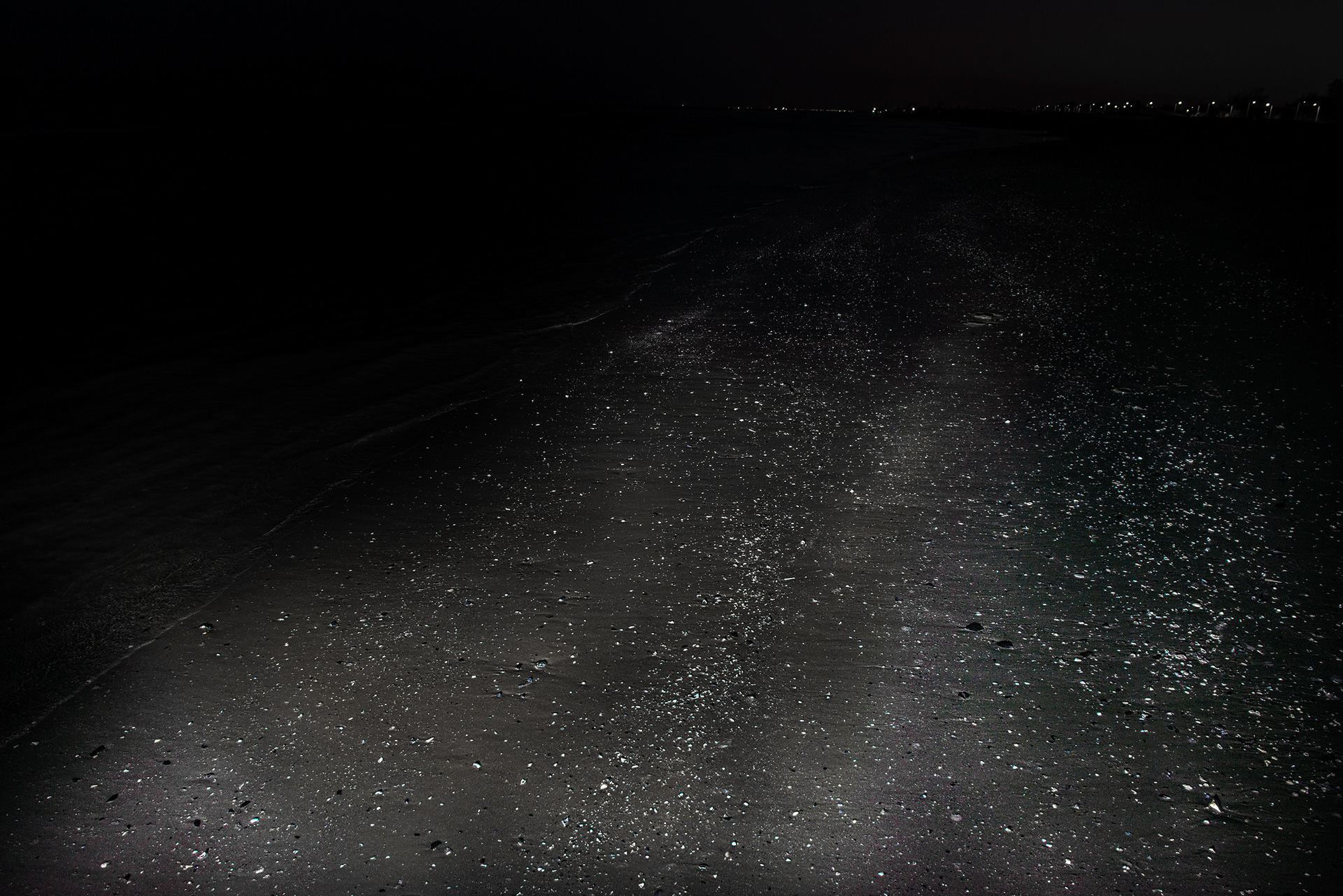
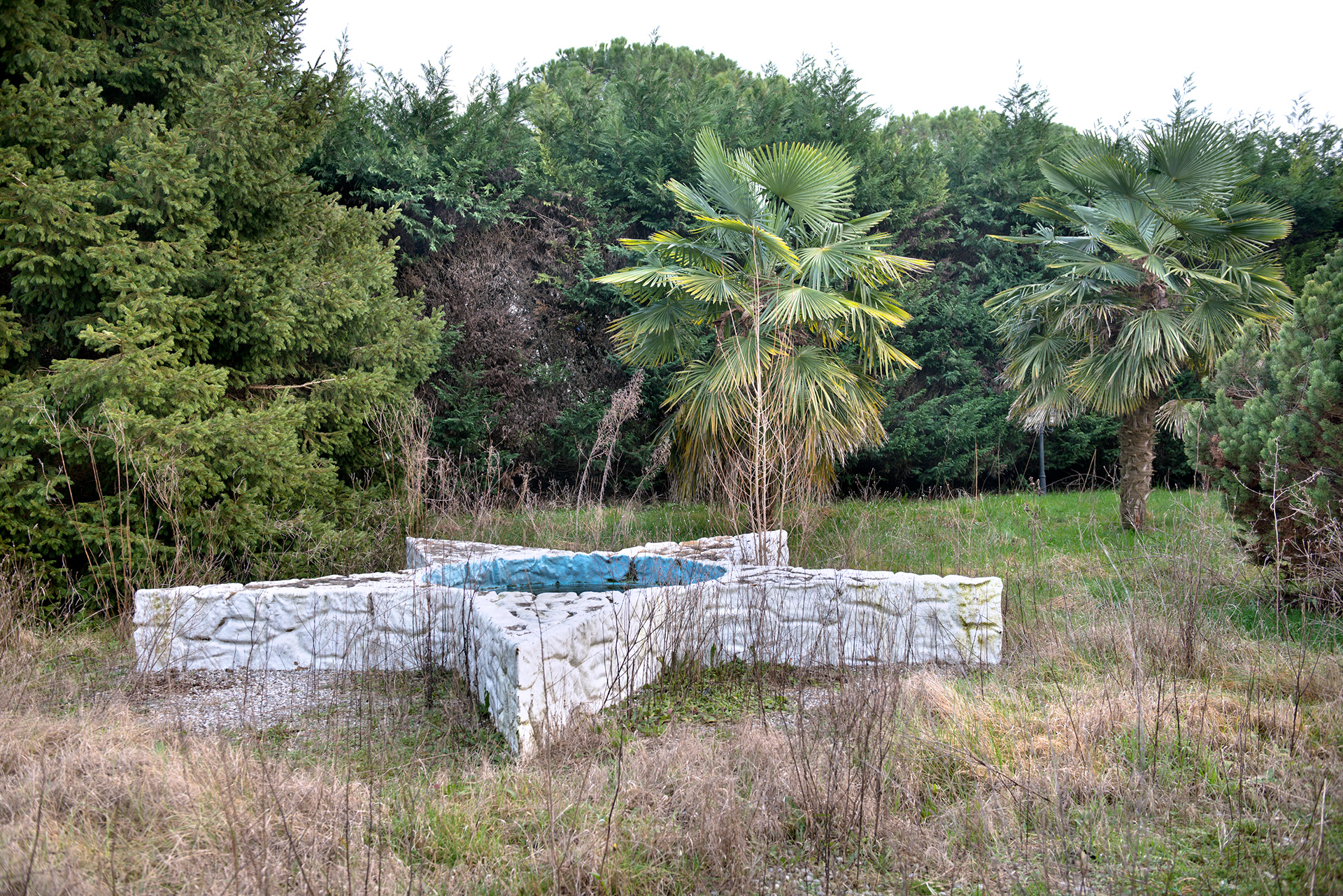
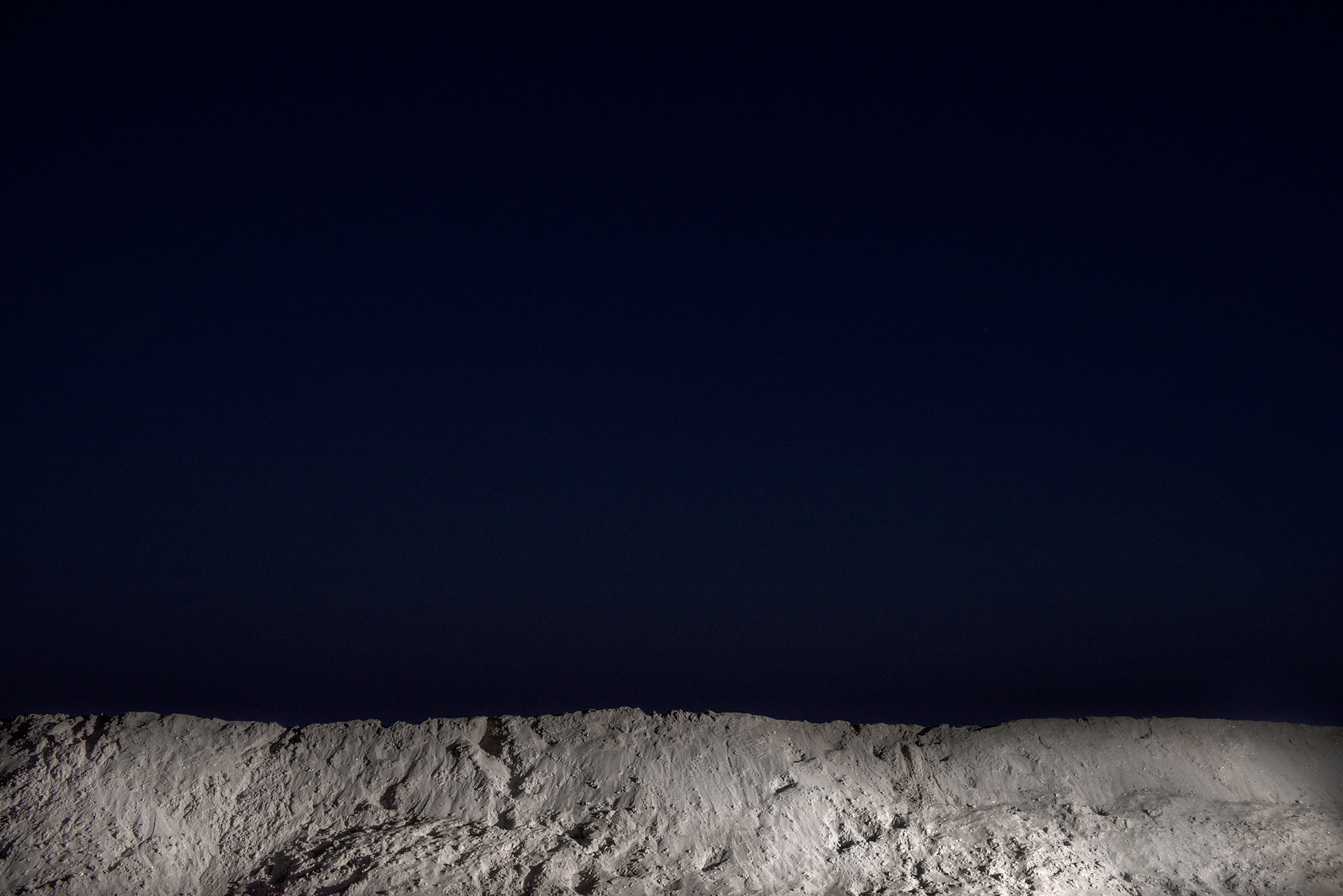
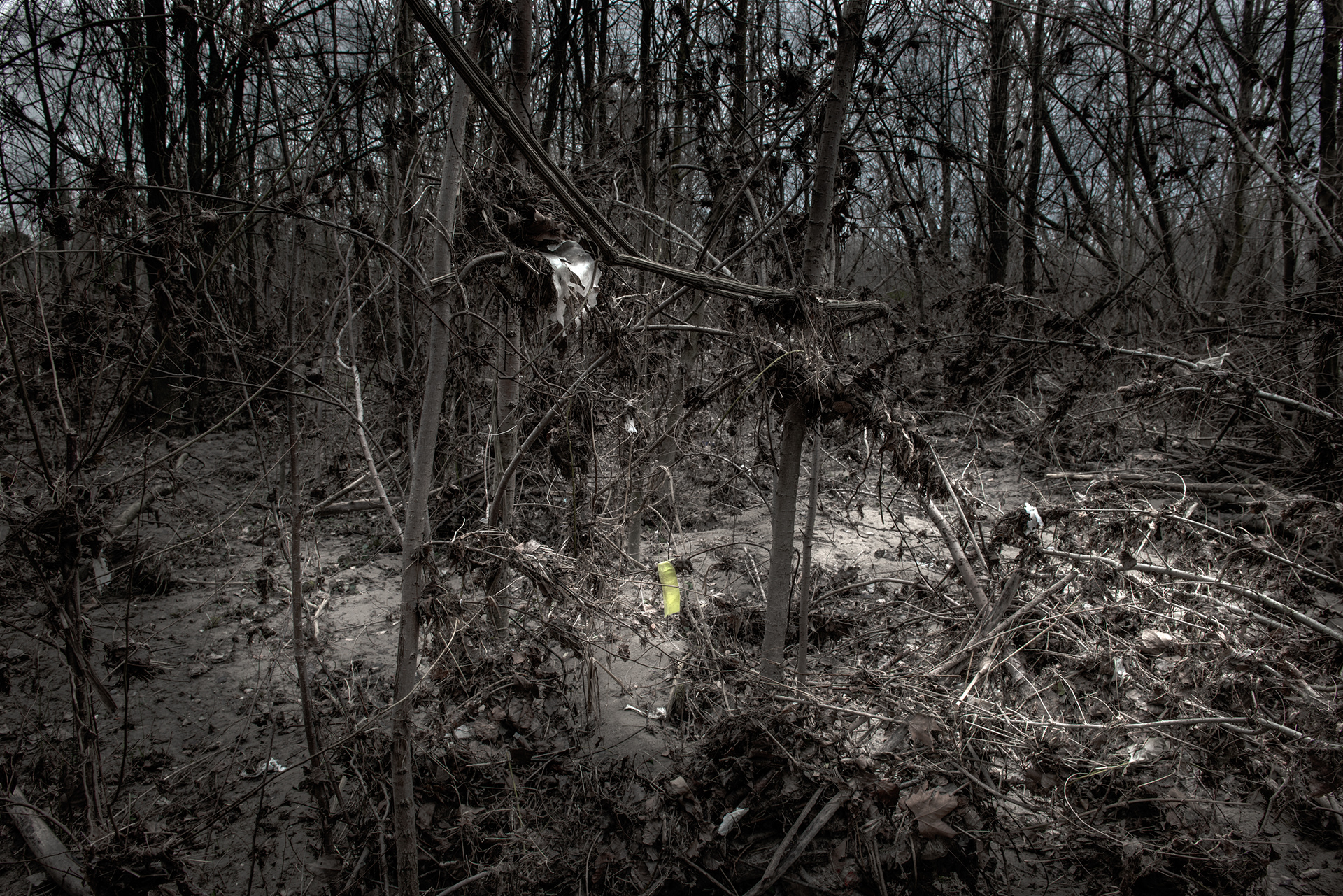
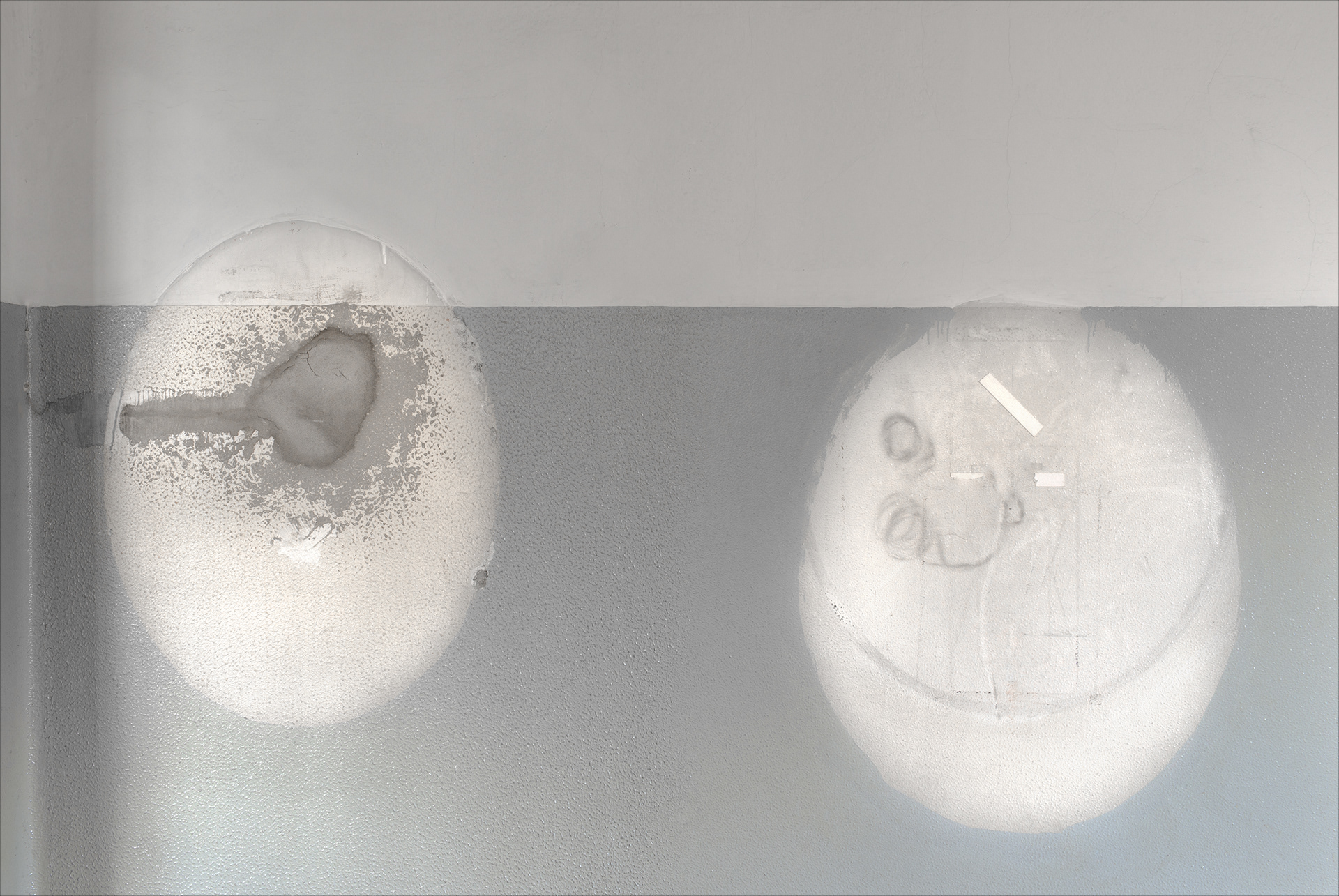


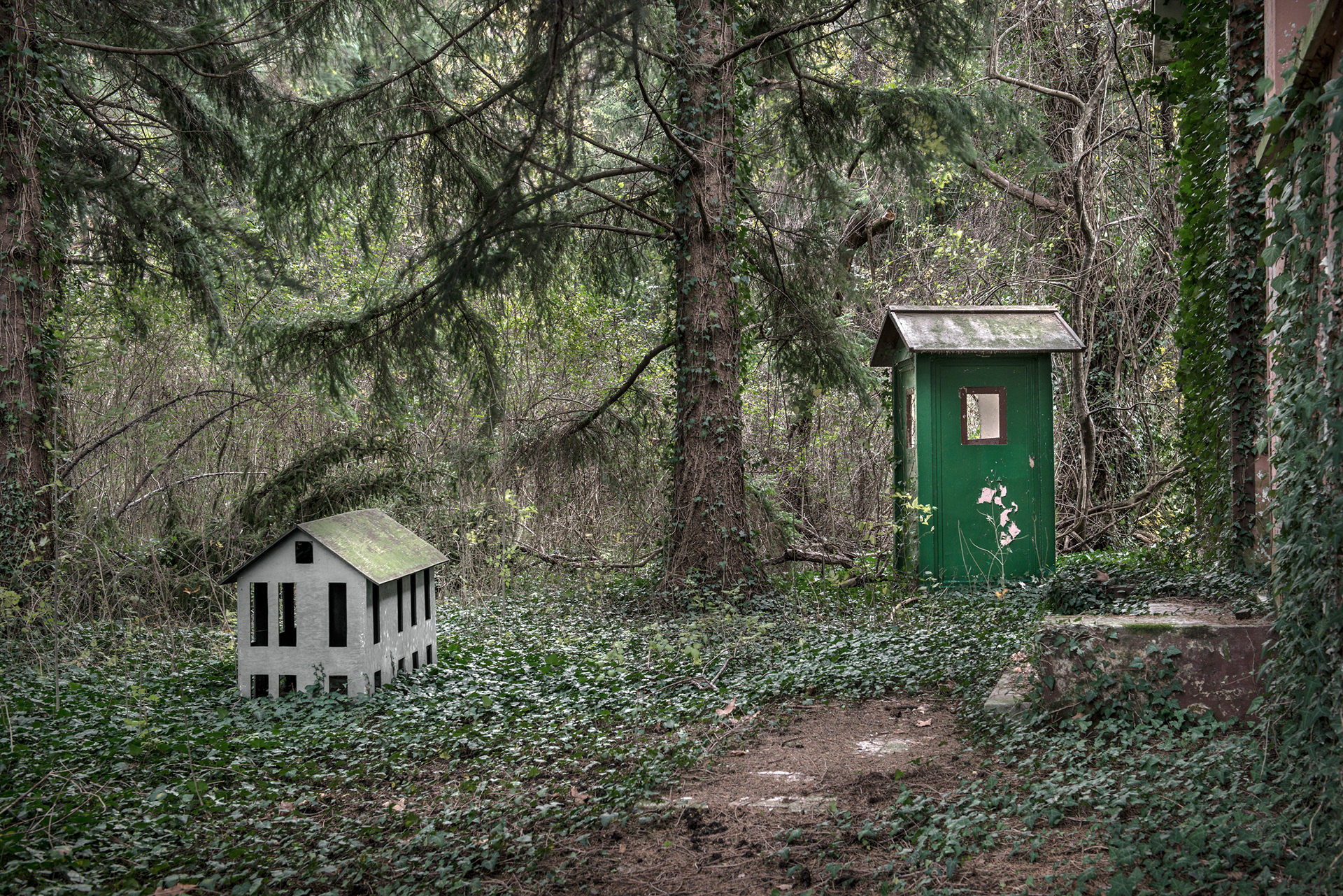

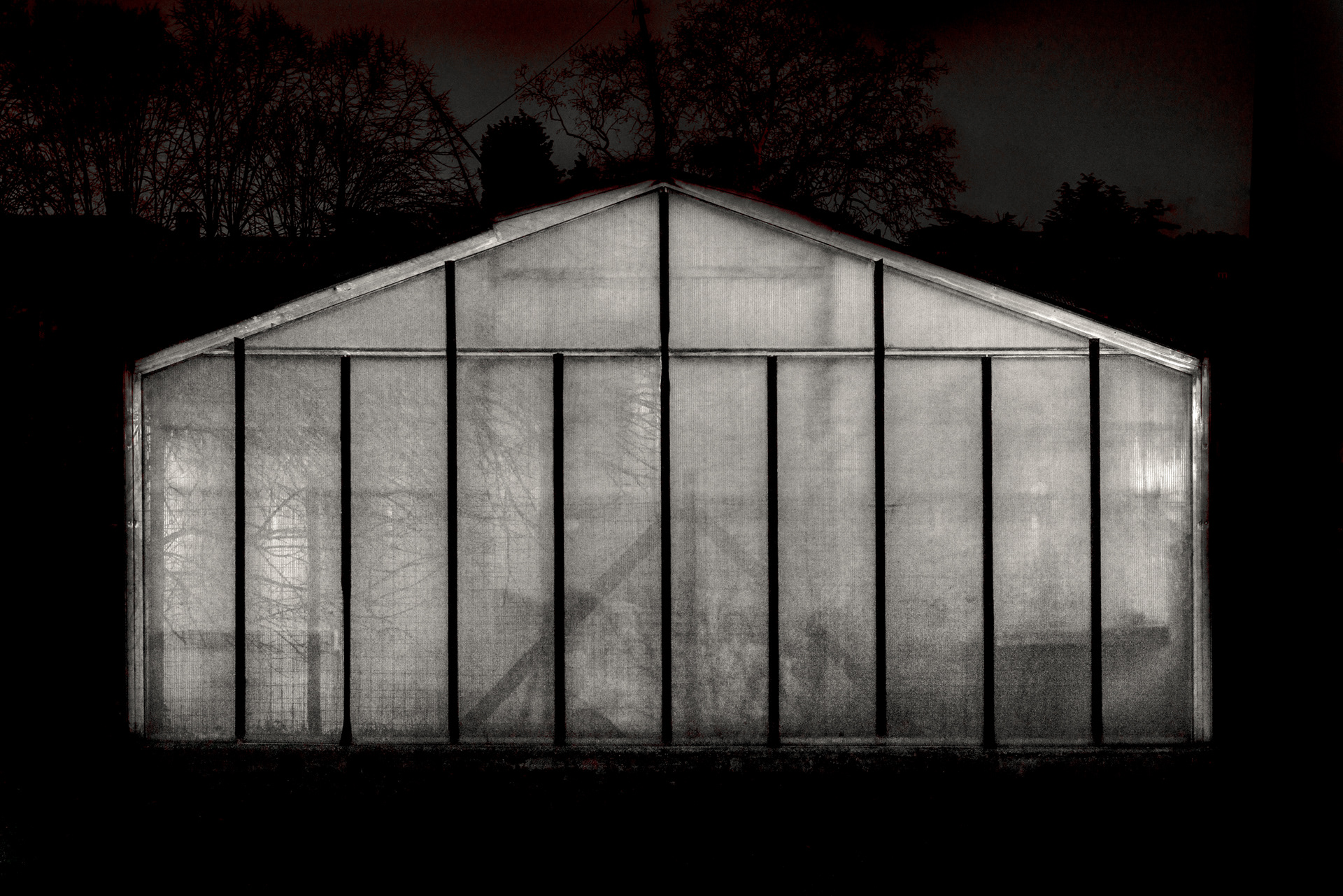
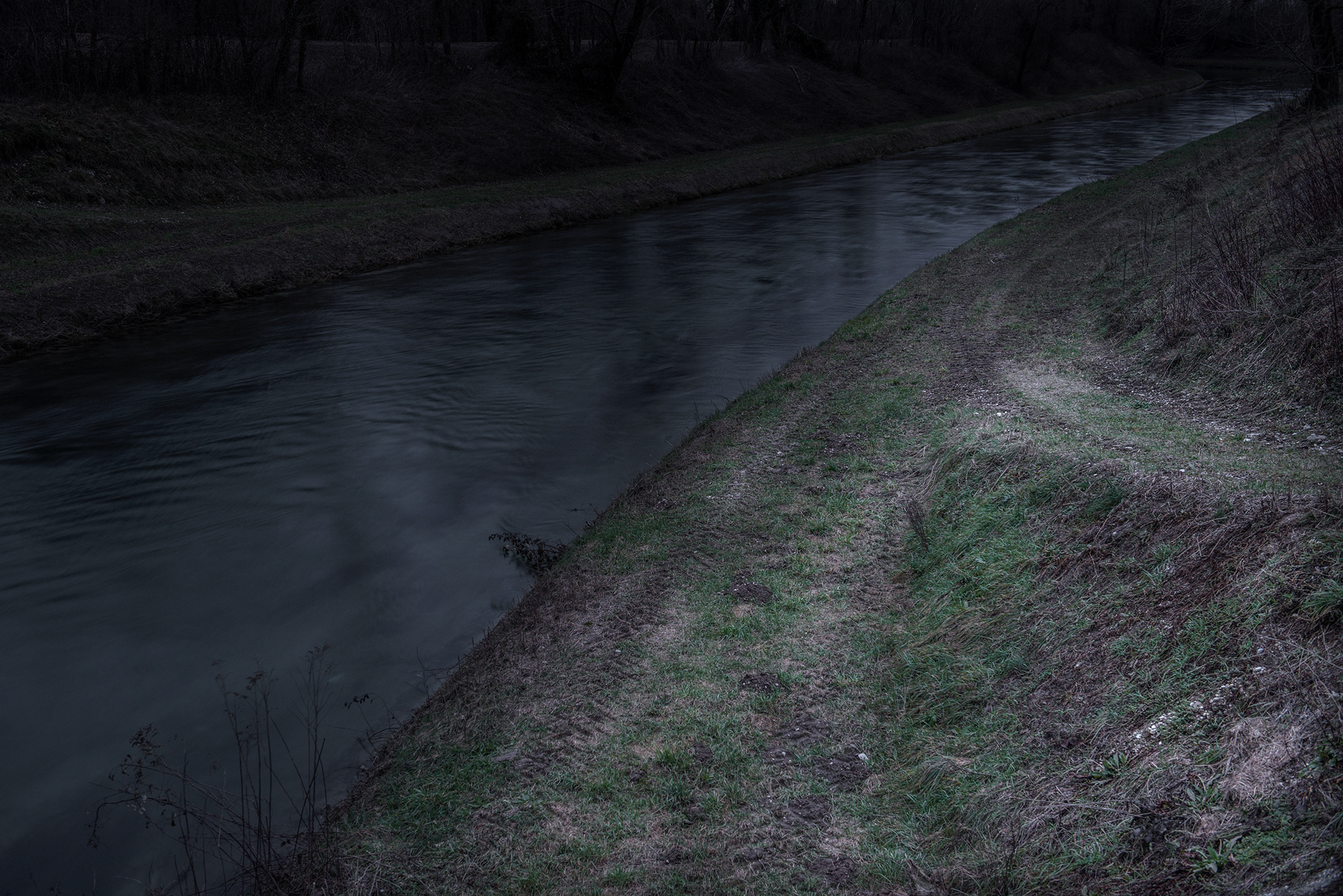
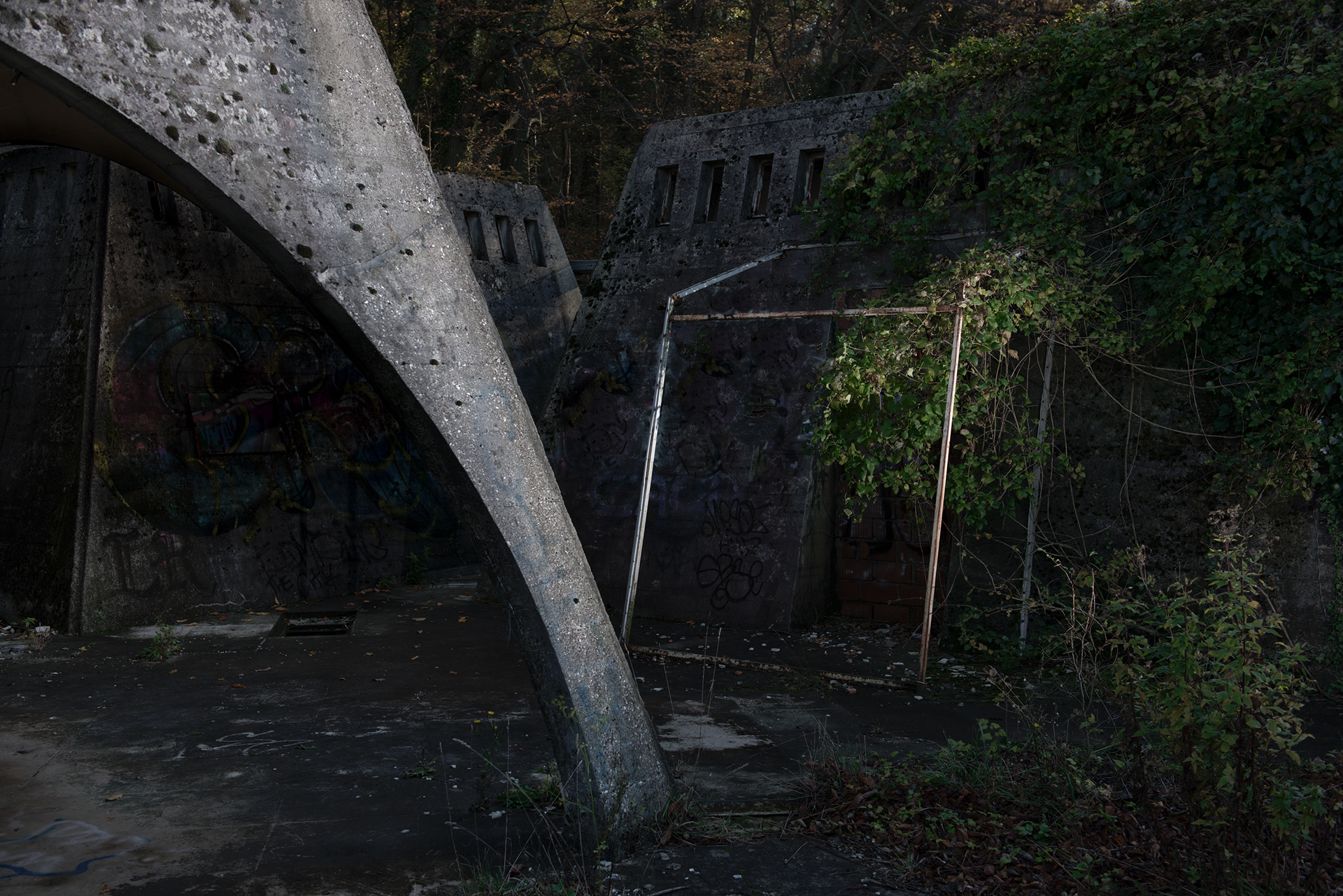
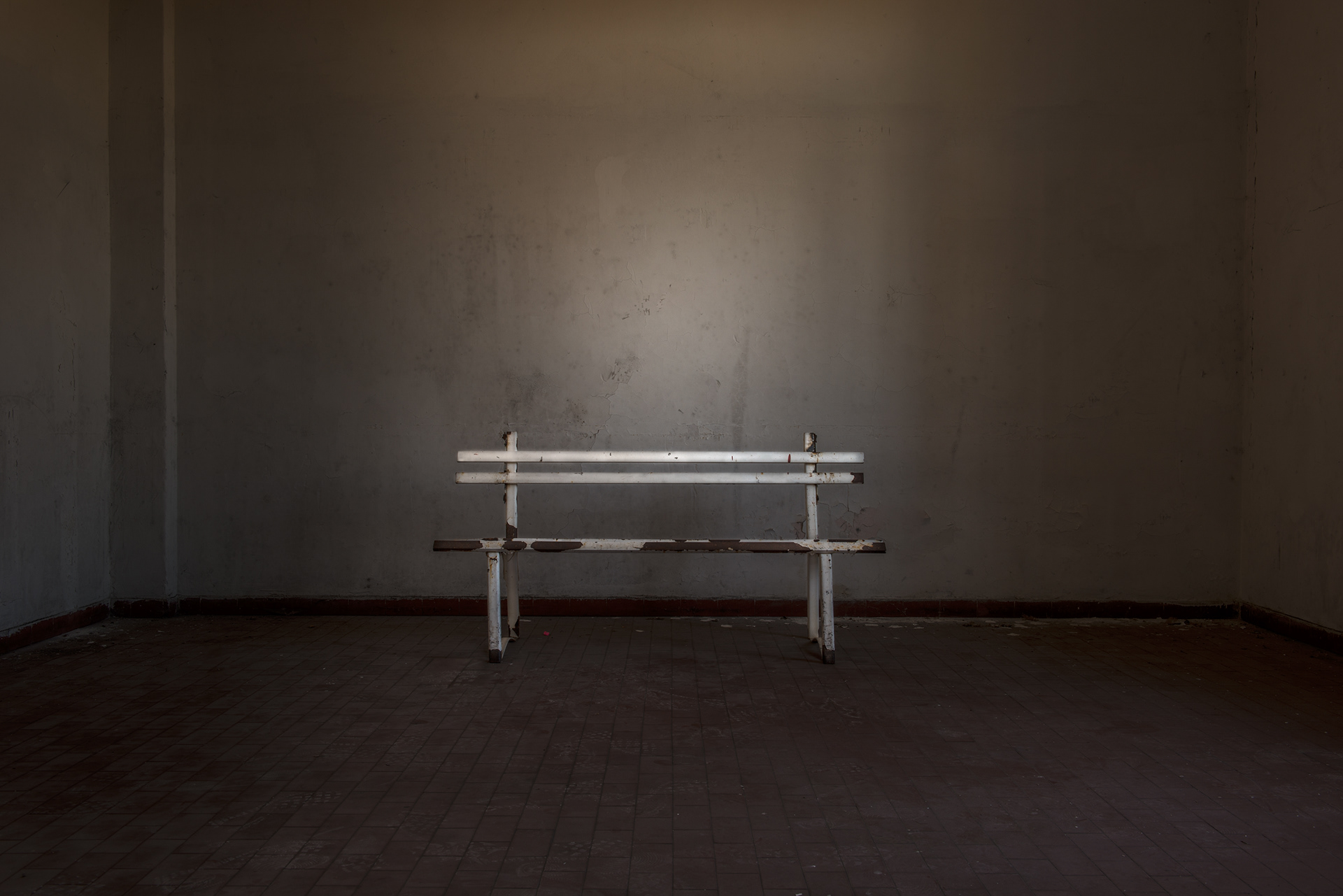
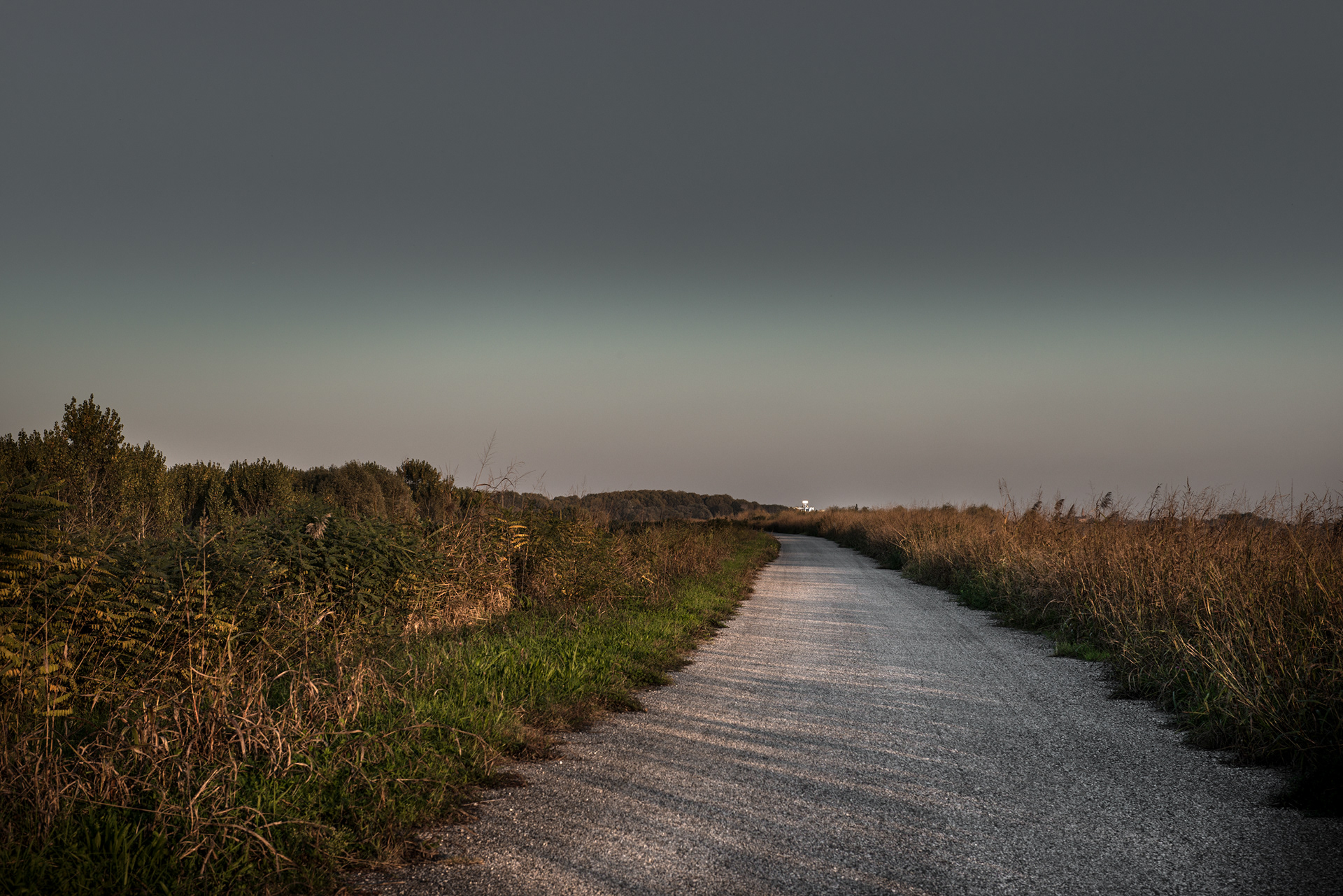
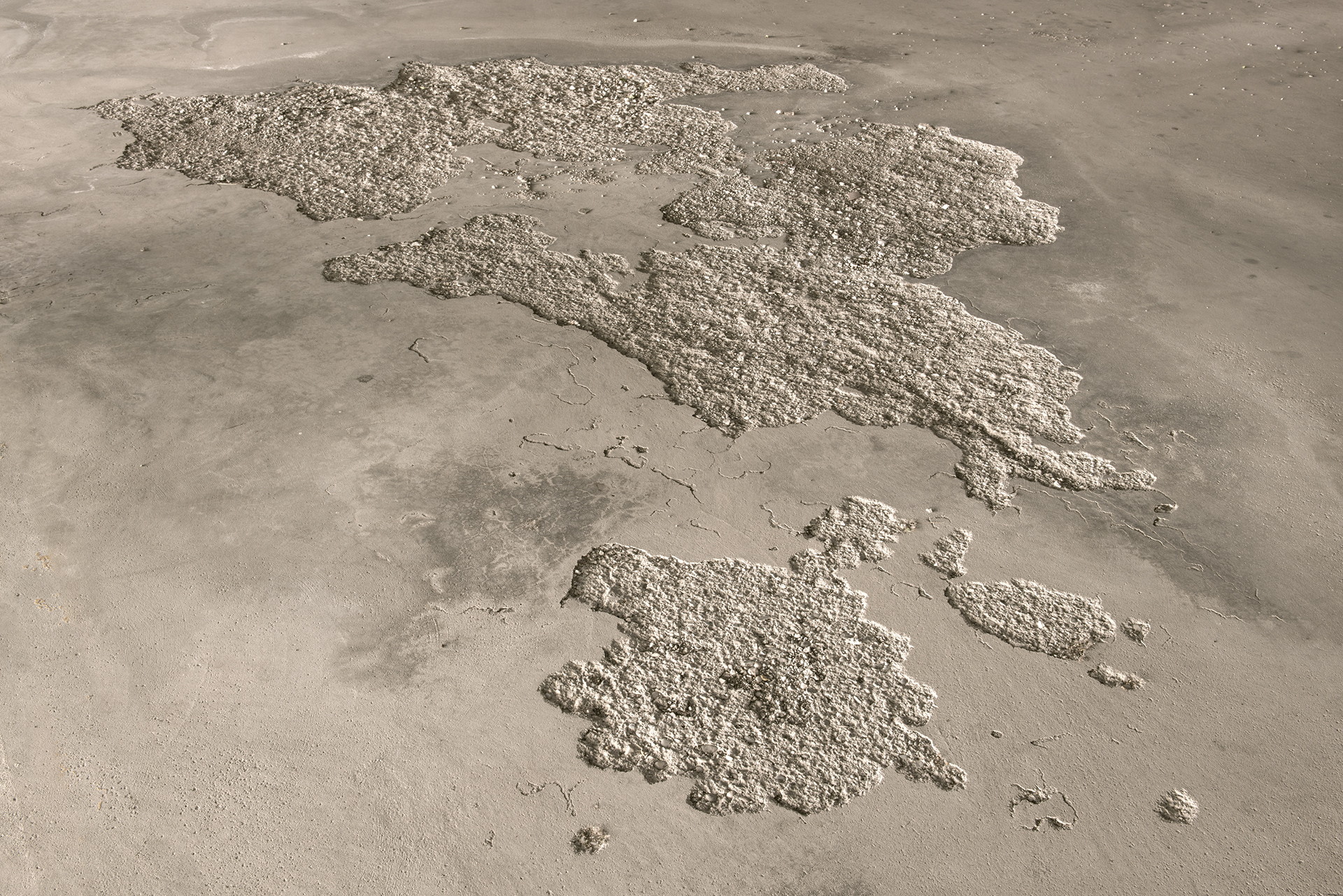



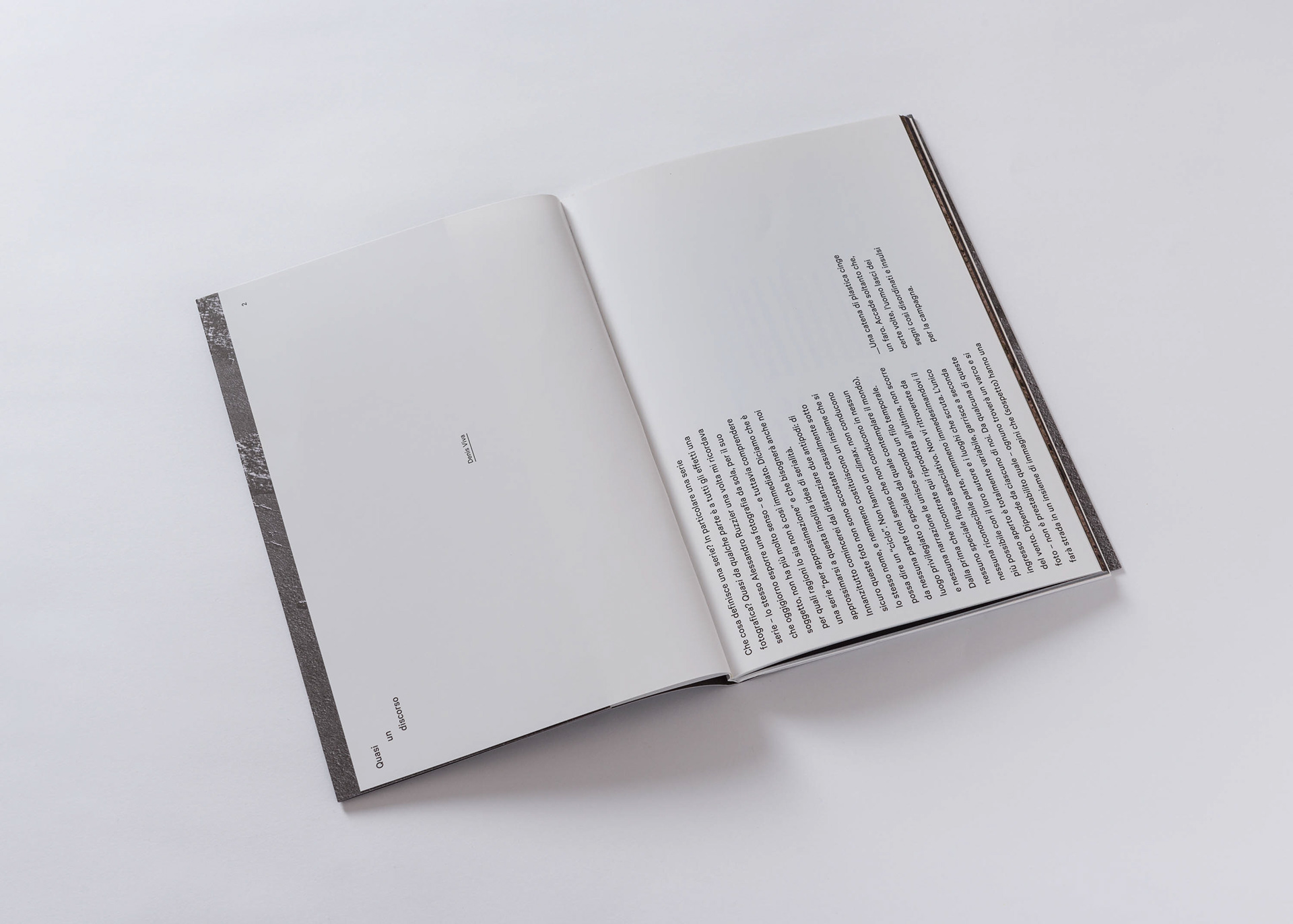

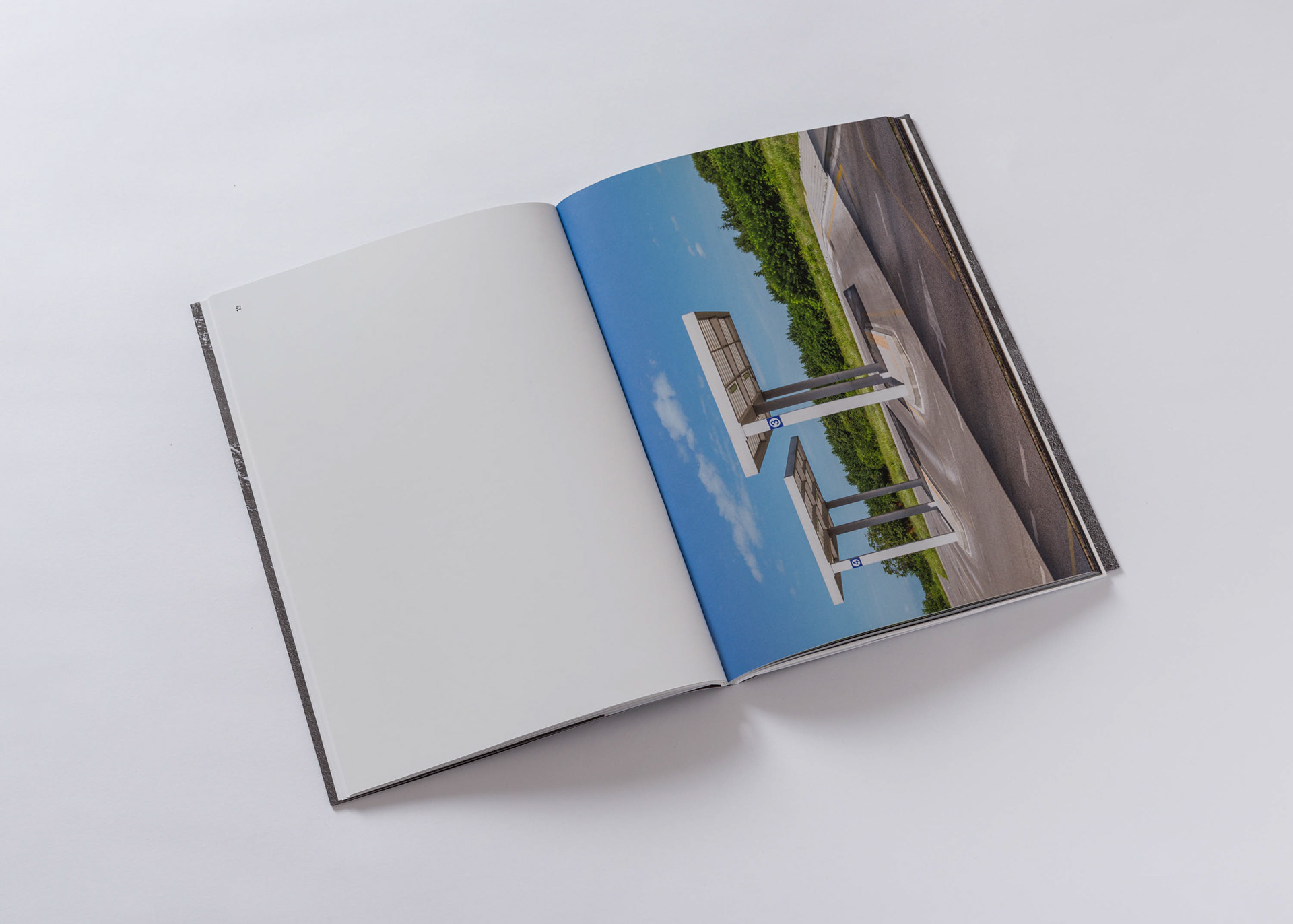


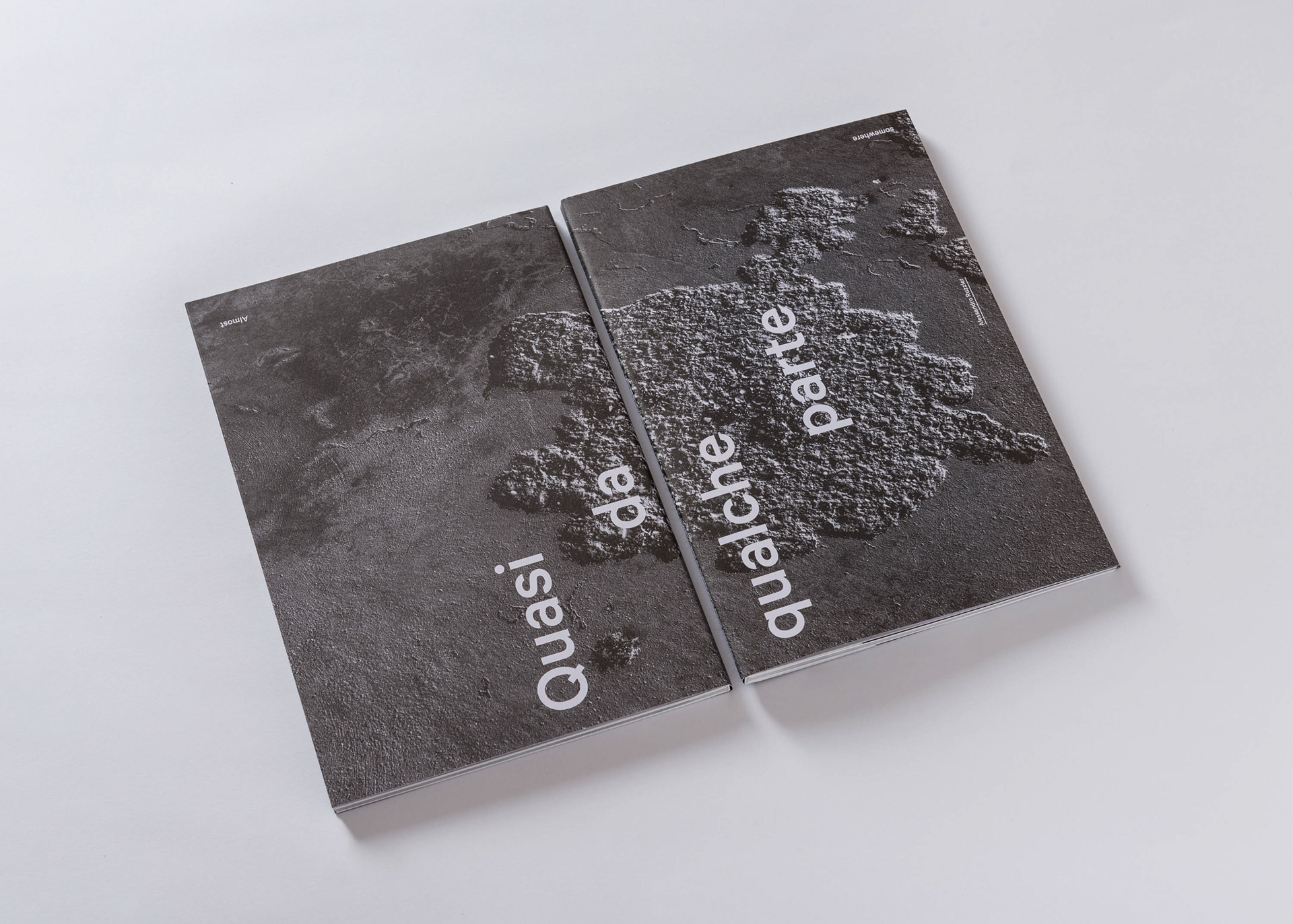
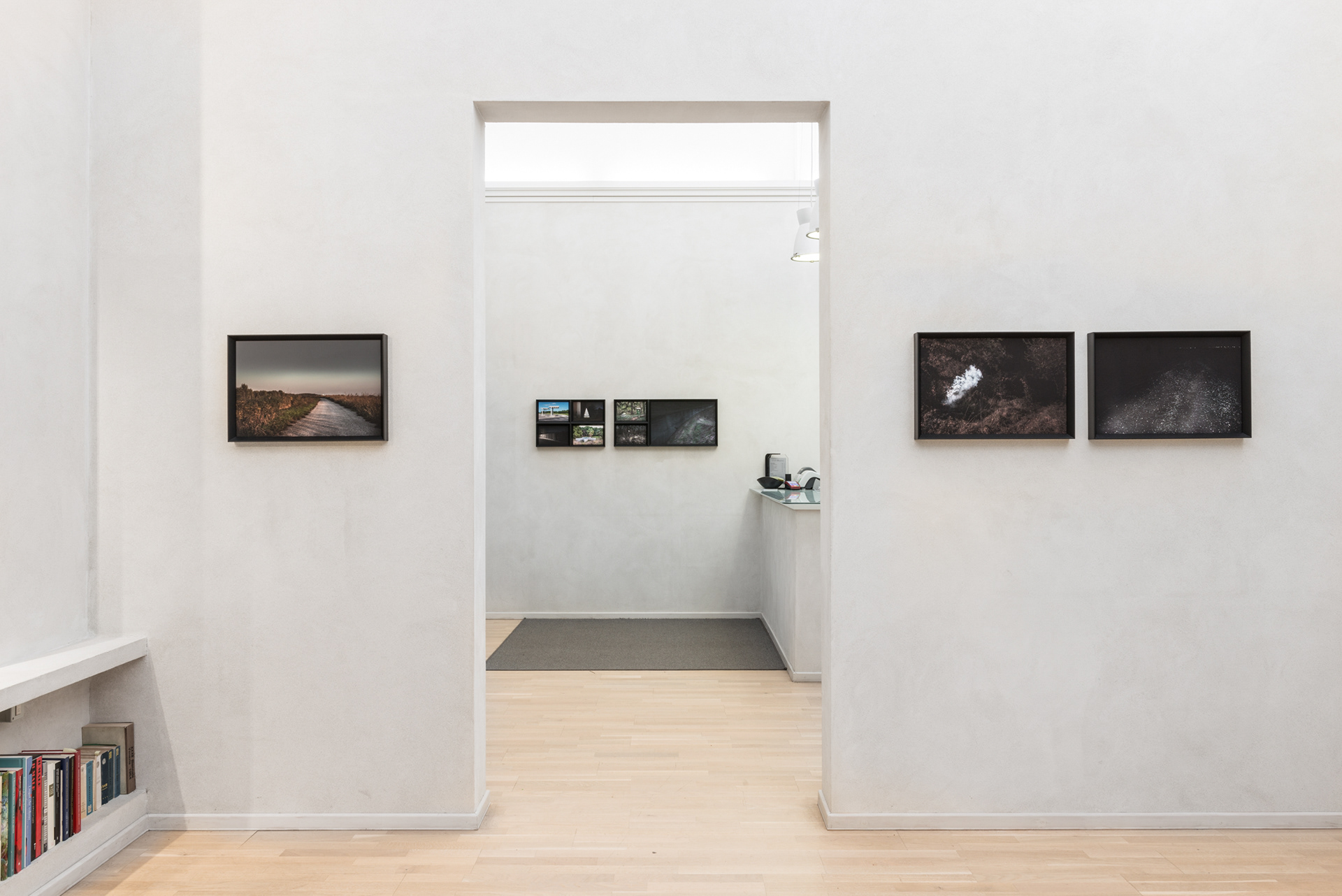
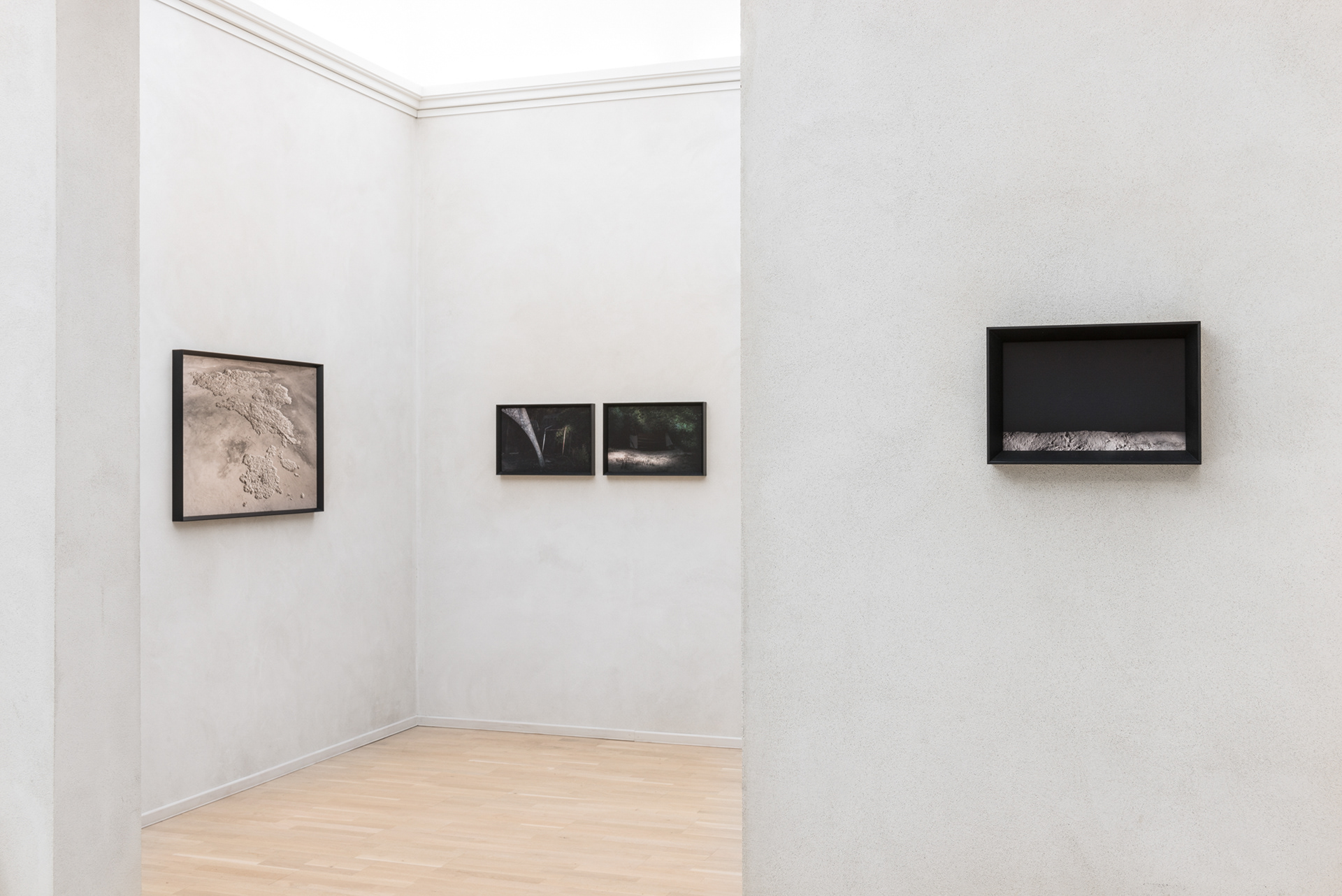
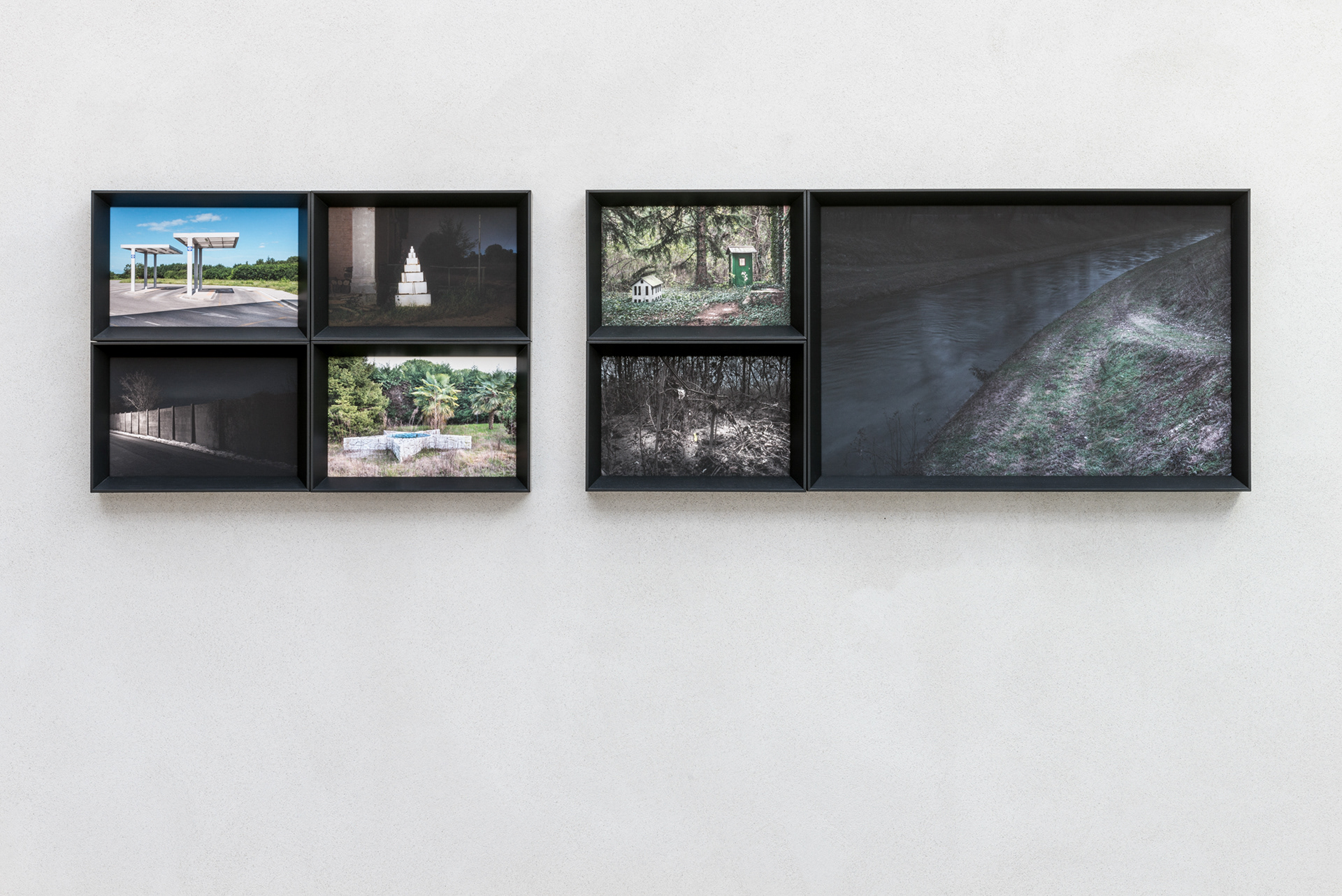
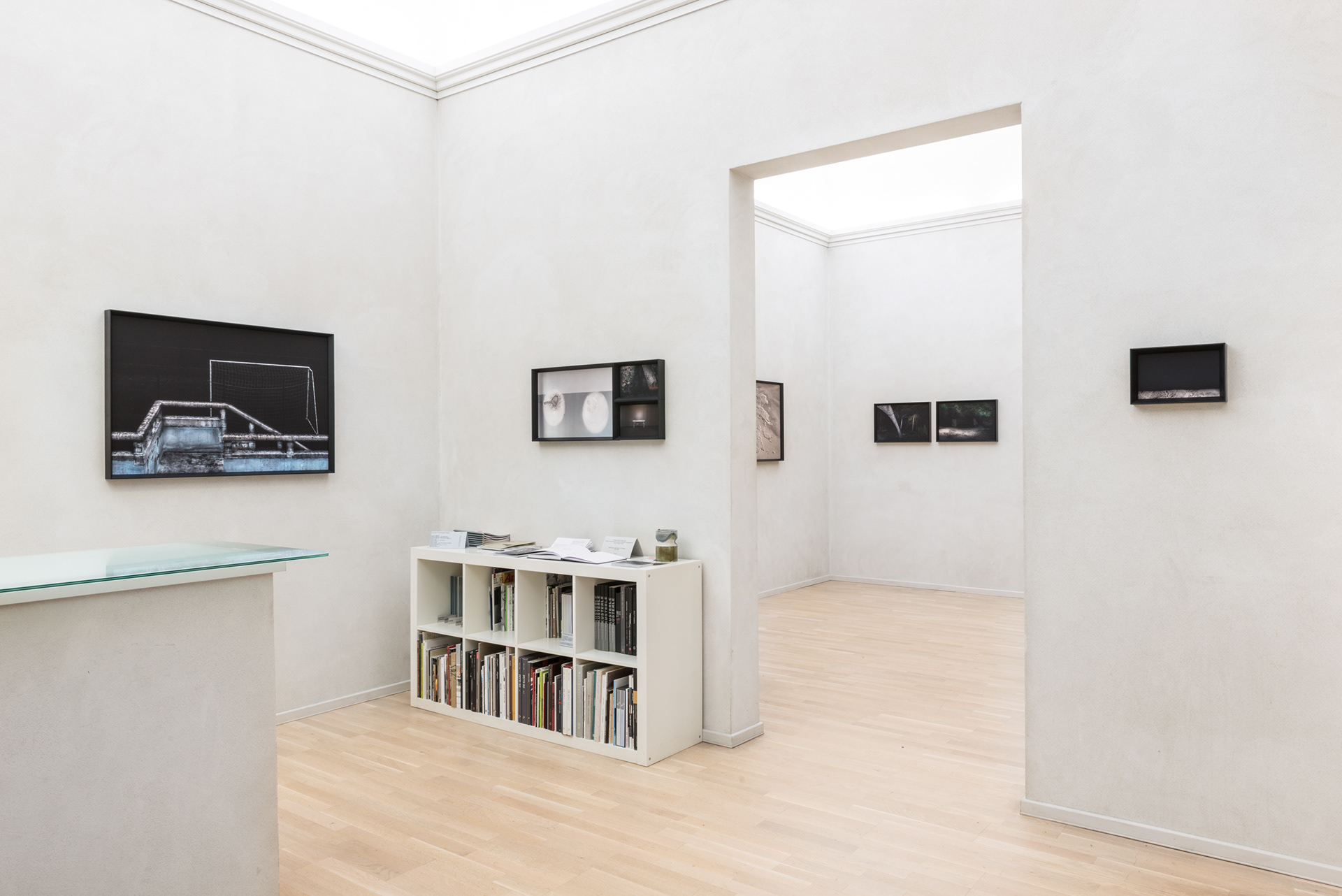
Almost a discourse
Denis Viva
What defines a series? In particular, a photographic series? Almost somewhere is, to all intents and purposes, a series – Alessandro Ruzzier himself once reminded me that, these days, exhibiting a photograph by itself no longer makes much sense – and yet the reason why is not immediately clear. We might say that it is a series “by approximation”, and that we ourselves need to approximate this unusual notion of a series.
First and foremost, I would like to start by leaving behind two polar ideas: these photos have certainly not been casually placed under the same banner, but nor do they constitute a group that could be called a “cycle”. They have no climax, they do not lead anywhere (in the sense that they do not lead to some privileged or special place from which to observe the world), and no narrative unites them in a timeline. From the first photograph, which you will find reproduced here, to the last, there is no particular flow of association. You will not find yourselves anywhere that you recognise, not even if you think you identify with the photographer and the locations he looks at. The only way into the photographs varies, it changes with the wind. It depends on each of us. In some of these photographs – and there is no telling which – a person will find an opening and make their own way within a set of images which (I suspect) have a profound commonality.
One must abandon even the most established idea of “series”, which from Claude Monet spans the entire 20th Century to the photography of Bernd and Hilla Becher: it is not the study of a subject to resolve issues of form, nor a method or a code applied to a series of subjects, nor the exploration of a method or a code through the repetition of a subject. Much less is it the view of a moment, in which the subject appears to our eyes in an unrepeatable light. If a veil of innervated and latent black tones seems to pervade the majority of these photographs, it is in order to even out and re-establish an estrangement which, in other photographs, is already in the luminous condition of inception, the “natural” condition. The night facilitates a condition which can also be found in other ways.
Essentially, some kind of contingency, rather than a method, brings these photographs together, and it is not a technical contingency. The contingency lies primarily in the condition. And the condition lies in reconnaissance. The action is on the edges, not only in the topological or geographical sense.
The inspection of the environment by one man: this is perhaps the most frank and honest way to link these photographs. They shy away from the reckless journey as a novelistic trope, as from a habit, comfortable and typical. One wants to say that, behind each of these photographs, there lies an existential, biographical nature. But I would suggest instead that the nature of these photographs is anthropological rather than existential, biological rather than biographical. They are born at the same time, of the need to know these places, and the need for movement. They contain nothing personal, but something involuntarily collective. They are linked to curiosity and movement, much like man himself.
But there is something else. Almost somewhere is, apparently, a collection of places that, as yet, are neither places in which one rediscovers one’s identity, nor non-places through which the identity moves and is consumed. They are not nothing, or rather, they are half-places. They display signs of waiting, and at the same time seem to be unsure of themselves. The view through the lens, of such dark and translucent blacks that are sometimes almost endless in their gradations, and at other times very deep and clear, does nothing but increase this uncertainty. It is not in line with the decorum that the subject requires (used, silent, abandoned); if anything it amplifies its absurd recognisability, or it recognises its absurdity. We come across these places and do not look for them. And once seen, they do not give us any symbol, no treatise on the world, no salient sign. They subtract the photograph from any shred of reportage and confine it. They give it the opportunity to be just as liminal, as many other iconic practices manage to be, existing at the intersection of many directions without taking any of them.
The estrangement of the everyday, decontextualisation, the solitude of objects: these are all deeply-rooted aspects of Italian visual culture, which require no further evocation or in-depth study. But the second impression that these photographs leave, after careful observation, a retinal adjustment as it were, moves gently away from this tradition. Now we have the sensation of standing before many secondary phenomena, from which, however, we are unable to reconstruct the principal phenomenon, their origin or cause. Above all, they seem not to guard any kind of secret that, once understood, would explain them. They are images that do not resolve. This apparent restriction, however, gives them a hidden potential. Their intransitive nature renders them interrogative, and thus acceptable, but acceptable all together, and it is here that we return to the concept of “series” which I raised at the beginning of this piece. Considered alone, these photographs would be imbued with an excessive and inappropriate sense of mystery; if there were too many of them, the eye would become too accustomed to them and they would become ordinary. The extremes of exegesis and narcosis cannot be applies to these images. The selection of this series is the result of a strict perpetuation of suspense, of a questioning tension. In this way, these photographs admit the contradictory, they evoke a contrasting range of registers and interpretations, from the tenebrous to the grotesque, from the infantile to the scatological, from the kitsch to the spiritual. They remain an ensemble, then, because of their capacity for interlocution. In a world in which images have to be direct and persuasive, in which economy of expression extends ever-more into the visual sphere, these images exist in a refreshing limbo.
Denis Viva
What defines a series? In particular, a photographic series? Almost somewhere is, to all intents and purposes, a series – Alessandro Ruzzier himself once reminded me that, these days, exhibiting a photograph by itself no longer makes much sense – and yet the reason why is not immediately clear. We might say that it is a series “by approximation”, and that we ourselves need to approximate this unusual notion of a series.
First and foremost, I would like to start by leaving behind two polar ideas: these photos have certainly not been casually placed under the same banner, but nor do they constitute a group that could be called a “cycle”. They have no climax, they do not lead anywhere (in the sense that they do not lead to some privileged or special place from which to observe the world), and no narrative unites them in a timeline. From the first photograph, which you will find reproduced here, to the last, there is no particular flow of association. You will not find yourselves anywhere that you recognise, not even if you think you identify with the photographer and the locations he looks at. The only way into the photographs varies, it changes with the wind. It depends on each of us. In some of these photographs – and there is no telling which – a person will find an opening and make their own way within a set of images which (I suspect) have a profound commonality.
One must abandon even the most established idea of “series”, which from Claude Monet spans the entire 20th Century to the photography of Bernd and Hilla Becher: it is not the study of a subject to resolve issues of form, nor a method or a code applied to a series of subjects, nor the exploration of a method or a code through the repetition of a subject. Much less is it the view of a moment, in which the subject appears to our eyes in an unrepeatable light. If a veil of innervated and latent black tones seems to pervade the majority of these photographs, it is in order to even out and re-establish an estrangement which, in other photographs, is already in the luminous condition of inception, the “natural” condition. The night facilitates a condition which can also be found in other ways.
Essentially, some kind of contingency, rather than a method, brings these photographs together, and it is not a technical contingency. The contingency lies primarily in the condition. And the condition lies in reconnaissance. The action is on the edges, not only in the topological or geographical sense.
The inspection of the environment by one man: this is perhaps the most frank and honest way to link these photographs. They shy away from the reckless journey as a novelistic trope, as from a habit, comfortable and typical. One wants to say that, behind each of these photographs, there lies an existential, biographical nature. But I would suggest instead that the nature of these photographs is anthropological rather than existential, biological rather than biographical. They are born at the same time, of the need to know these places, and the need for movement. They contain nothing personal, but something involuntarily collective. They are linked to curiosity and movement, much like man himself.
But there is something else. Almost somewhere is, apparently, a collection of places that, as yet, are neither places in which one rediscovers one’s identity, nor non-places through which the identity moves and is consumed. They are not nothing, or rather, they are half-places. They display signs of waiting, and at the same time seem to be unsure of themselves. The view through the lens, of such dark and translucent blacks that are sometimes almost endless in their gradations, and at other times very deep and clear, does nothing but increase this uncertainty. It is not in line with the decorum that the subject requires (used, silent, abandoned); if anything it amplifies its absurd recognisability, or it recognises its absurdity. We come across these places and do not look for them. And once seen, they do not give us any symbol, no treatise on the world, no salient sign. They subtract the photograph from any shred of reportage and confine it. They give it the opportunity to be just as liminal, as many other iconic practices manage to be, existing at the intersection of many directions without taking any of them.
The estrangement of the everyday, decontextualisation, the solitude of objects: these are all deeply-rooted aspects of Italian visual culture, which require no further evocation or in-depth study. But the second impression that these photographs leave, after careful observation, a retinal adjustment as it were, moves gently away from this tradition. Now we have the sensation of standing before many secondary phenomena, from which, however, we are unable to reconstruct the principal phenomenon, their origin or cause. Above all, they seem not to guard any kind of secret that, once understood, would explain them. They are images that do not resolve. This apparent restriction, however, gives them a hidden potential. Their intransitive nature renders them interrogative, and thus acceptable, but acceptable all together, and it is here that we return to the concept of “series” which I raised at the beginning of this piece. Considered alone, these photographs would be imbued with an excessive and inappropriate sense of mystery; if there were too many of them, the eye would become too accustomed to them and they would become ordinary. The extremes of exegesis and narcosis cannot be applies to these images. The selection of this series is the result of a strict perpetuation of suspense, of a questioning tension. In this way, these photographs admit the contradictory, they evoke a contrasting range of registers and interpretations, from the tenebrous to the grotesque, from the infantile to the scatological, from the kitsch to the spiritual. They remain an ensemble, then, because of their capacity for interlocution. In a world in which images have to be direct and persuasive, in which economy of expression extends ever-more into the visual sphere, these images exist in a refreshing limbo.